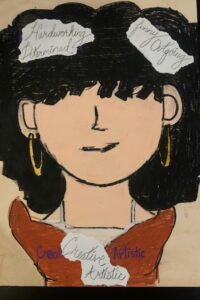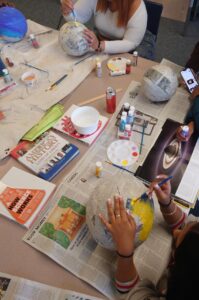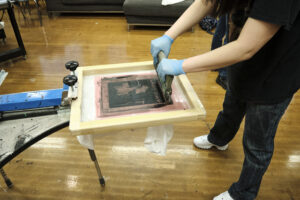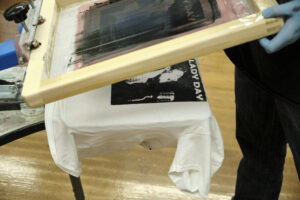 Arts Corps’ Interagency Arts Program brings arts classes to students at five Interagency Academy sites. This network of small alternative high schools, which are part of the Seattle Public School (SPS) District, are designed to provide extra support for students who have not found success at traditional schools due to a wide range of factors.
Arts Corps’ Interagency Arts Program brings arts classes to students at five Interagency Academy sites. This network of small alternative high schools, which are part of the Seattle Public School (SPS) District, are designed to provide extra support for students who have not found success at traditional schools due to a wide range of factors.
Interagency describes their student populations by stating, “We serve students who have not found success at comprehensive schools because of poverty, homelessness, racism, mental and physical health, substance abuse, family violence, abuse, neglect and abandonment, incarceration, gang involvement and a score of other issues. Our students are typically the furthest from educational justice.”
As Seattle Public Schools works to reduce achievement gaps which are marked by academic performance and by graduation rates and which are tied to race and income, arts-based engagement and culturally relevant learning experiences serve as a way to mediate the factors arising from structural challenges experienced by youth. This is especially true for Interagency, where students have been disproportionately impacted.
Arts Corps’ teaching artists work with small groups (typically between 2 – 10 students) to provide a safe, consistent space for creative expression, social-emotional development, and arts-based strategies for engagement in school.
The partnership between Arts Corps and Interagency is built on a proven track record of teaching artists leveraging the power of the arts as a tool for achieving positive outcomes with students. It’s also rooted in shared efforts to bring arts-based restorative justice to these sites. Interagency staff comment that the arts have a direct impact on student attendance and engagement, and that in some cases it was the only reason a student showed up in the morning or stayed for the entire day.
 In alignment with Interagency, we approach our program with a strength-based view of students, while acknowledging the complexity of the issues they face. We commit to providing a safe and supportive environment free from disciplinary action against students. The teaching artist and supporting staff are provided with resources such as books and articles, workshops, cohort-based professional development, and decision-making tools to develop their understanding of racial justice-based education and culturally specific student populations.
In alignment with Interagency, we approach our program with a strength-based view of students, while acknowledging the complexity of the issues they face. We commit to providing a safe and supportive environment free from disciplinary action against students. The teaching artist and supporting staff are provided with resources such as books and articles, workshops, cohort-based professional development, and decision-making tools to develop their understanding of racial justice-based education and culturally specific student populations.
Interagency students’ creativity, resilience, and aptitude for arts-based entrepreneurship is remarkable. Furthermore, they shine as individuals who develop their unique voice and express their point of view through the arts.
Print 4 Life
Part of our Interagency programs is Print 4 Life, launched in 2018 with support from the City of Seattle’s Office of Arts and Culture. Students enrolled in the Print 4 Life class receive credit for their work designing and screen printing t-shirts, tote bags, and other apparel, and then gain valuable entrepreneurial skills selling their products at local events and farmer’s markets. Print 4 Life takes place as an after-school program at Southeast Interagency Academy (SEIA).




